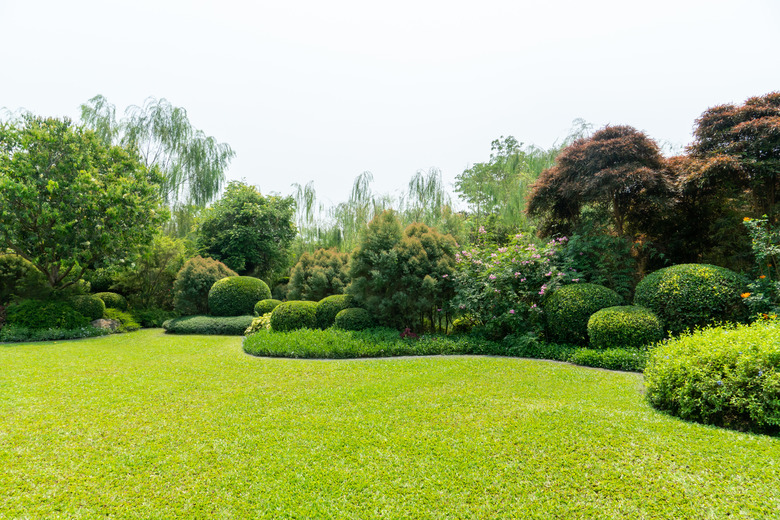The Best Grass Seed And Seed Mixes For The Northeast
We may receive a commission on purchases made from links.
Lawn-grass professionals divide the United States into four main zones of grass adaptation based on climatic conditions. The Northeast region of the country falls into what's known as the cool, humid zone. Lawn grasses that do best in the Northeast are hardy, cool-season grasses that tolerate humidity in addition to cold.
Using Cool-Season Grass Mixes
Using Cool-Season Grass Mixes
Because most lawns have areas that vary in moisture as well as sun and shade exposure, a mixture of cool-season grasses normally delivers the best overall lawn. Cool-season varieties can handle lots of temperature fluctuations, including cold winters. Using a mixture allows different, complementary grass types to dominate in various areas and conditions that fit them best.
The best time to seed Northeast lawns is during fall, when cool-season grasses grow most vigorously and warm-season weeds are less active than they are in summer. Spring seeding also works well, but it generally requires using more seeds to obtain the same results as fall seeding.
Kentucky Bluegrass Variety
Kentucky Bluegrass Variety
Kentucky bluegrass (Poa pratensis) is hardy in U.S. Department of Agriculture plant hardiness zones 2 through 6. Although slow to establish from seed, Kentucky bluegrass spreads vigorously via underground stems known as rhizomes once it gets settled into sunny lawns. That spreading behavior also helps it repair itself when it gets damaged by foot traffic or other injuries. Known for its green color and fine texture, Kentucky bluegrass flourishes in cool temperatures with the consistent soil moisture common in Northeast lawns.
Perennial Ryegrass Variety
Perennial Ryegrass Variety
Hardy in USDA zones 3 through 6, perennial ryegrass (Lolium perenne) establishes quickly and greens up fast in spring, making it a welcome complement to Kentucky bluegrass. Some perennial ryegrass varieties have improved longevity over older, traditional varieties and offer a finer texture that mixes well with other cool-season grasses. This versatile lawn grass tolerates sun exposure, some shade, and high traffic. It adapts well to changing Northeast conditions, but it doesn't tolerate overly wet soil.
Tall Fescue Grass
Tall Fescue Grass
Tall fescue (Festuca arundinacea) was once considered only forage pasture grass but is recognized by turf breeders for its potential as a resilient lawn grass. It's hardy in USDA zones 4 through 7. Fairly new varieties known as turf-type fescue grasses retain tall fescue's clumping growth habit and its ability to thrive in poor, droughty soil while offering finer blades and improved turf quality. Deep-rooted, turf-type tall fescues stand up well to foot traffic and bring Northeast lawns improved texture, color and drought tolerance.
Fine Fescue Grasses
Fine Fescue Grasses
Fine fescues (Festuca spp.), such as creeping red fescue (Festuca rubra var. rubra, USDA zones 3 through 7), excel in well-drained shade and dry areas that challenge other Northeast lawn grasses. Mixing it with other cool-season grasses can help improve the shade tolerance of the lawn. Although these low-maintenance lawn grasses establish faster than Kentucky bluegrass, fine fescue grasses don't tolerate the wear and tear that tall fescues can. So they work best when confined to low foot-traffic areas.
Varieties of Bentgrass
Varieties of Bentgrass
Bentgrass (Agrostis spp., USDA zones 4 through 6) is historically the grass favored on golf-course greens. Newer varieties have increased the use of bentgrass by homeowners looking for dense, cushiony, golf-greenlike turf — or a backyard putting green. Spread by above-ground stems known as stolons, bentgrass offers a low-growth habit, fine texture, and rich-green color. Bentgrass thrives in the Northeast's cool, humid climate and fertile soil.
